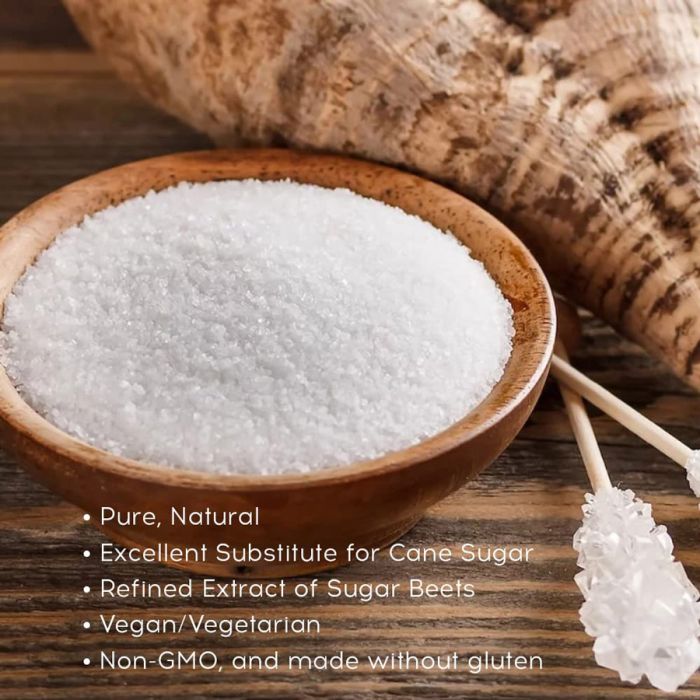The discussion of beet sugar vs cane sugar often includes comparisons of their impact on health.
The discussion of beet sugar vs cane sugar often includes comparisons of their impact on health.
Blog Article
Checking Out the Differences being used and Benefits Between Beet Sugar Vs Cane Sugar
In the cooking world, the choice in between beet sugar and cane sugar is not simply about sweet taste however involves a nuanced factor to consider of flavor, application, and influence. While both sugars come from various plants, each goes through special production processes that discreetly influence their features and suitability for numerous meals. As cooks and consumers significantly focus on both the environmental and flavor accounts of their components, recognizing these differences comes to be important. This expedition provides understanding right into exactly how each sugar type can best improve cooking productions.
Origins and Manufacturing Procedures of Beet and Cane Sugar

Cane sugar, on the various other hand, comes from the sugarcane plant, an exotic turf native to Southeast Asia now cultivated in exotic areas worldwide. The production of cane sugar starts with the harvesting of cane stalks, which are squashed to launch the juice. This juice is then boiled to concentrate it, after which it is rotated in centrifuges to generate raw sugar crystals. These crystals are further fine-tuned to generate the white sugar commonly offered in shops.

Nutritional Material and Health Considerations

When contrasting the nutritional material of beet sugar and cane sugar, it ends up being apparent that both kinds essentially give the very same caloric values, with about 16 calories per tsp and no significant nutrient diversity. Each is composed virtually entirely of sucrose, which is a basic carb that offers quick energy however lacks vitamins, minerals, or fiber. This resemblance reaches their effect on health and wellness, specifically worrying blood sugar levels. Both sugars, when consumed in excess, can contribute to elevated blood sugar degrees, a risk element for diabetes mellitus and various other metabolic problems. Excessive intake can lead to weight gain and dental problems, as both sugars are equally cariogenic, promoting tooth decay. From a health perspective, moderating intake of any sort of sugar, whether from beet or cane, is advisable to avoid these prospective adverse impacts on wellness. Therefore, neither holds an unique advantage over the other Website in terms of health and wellness benefits.
Taste Profiles and Culinary Applications
Regardless of their comparable chemical structures, beet sugar and cane sugar differ subtly in taste, which can influence their usage in different culinary contexts. Walking cane sugar typically carries a tip of molasses, even in its polished form, lending a cozy, caramel-like undertone that boosts baked products, coffee, and chocolate-based dishes. This minor molasses flavor is particularly valued in the baking market for adding deepness to sweets and breads. On the various other hand, beet sugar is characterized by its very refined, neutral preference, making it a versatile sugar that does not alter the taste accounts of meals. This nonpartisanship is particularly beneficial read more in fragile recipes, such as light breads, lotions, and some sauces, where the fundamental flavors of various other active ingredients are meant to stick out. Chefs and food suppliers might pick one type of sugar over the various other based on the desired flavor result of their cooking creations.
Ecological Impact and Sustainability
While both beet and cane sugars are acquired from plants, their environmental impacts vary considerably due to the unique methods of farming and handling required for each. Sugar beet growing usually entails substantial mechanization, which can raise fossil gas consumption and carbon emissions.
In addition, the handling of sugarcane frequently produces a substantial amount of waste, consisting of bagasse, which, although functional as biofuel, frequently adds to air pollution if melted inefficiently. Sugar beet processing makes use of more of the raw products, leading to much less waste. Both markets face difficulties in decreasing their ecological footprints, yet ongoing technologies in agricultural techniques and waste administration are aiming to enhance sustainability.
Economic Elements Affecting the Sugar Industry
The economic dynamics of the sugar market are substantially affected by worldwide market needs and profession plans. In regions where sugarcane or sugar beet production is subsidized, producers may have a financial advantage that enables them to offer reduced rates on the international market.
In addition, variations in international need for sugar, influenced by dietary trends and commercial usage in food items, straight effect costs and production levels. beet sugar vs cane sugar. Climate condition additionally play an essential function, as they can considerably affect plant yields and, consequently, the supply chain. This irregularity presents a level of economic unpredictability that can cause investment volatility in sugar production fields, affecting decisions from growing to market approach
Final Thought
To conclude, both beet and cane sugar have one-of-a-kind high qualities that suit various culinary needs. While cane sugar conveys a rich next flavor suitable for enhancing baked items, beet sugar's nonpartisanship is ideal for lighter recipes. Nutritional resemblances notwithstanding, their distinctive production processes and ecological impacts include complexity to the selection between them. Hence, comprehending these distinctions assists chefs and consumers make educated decisions that straighten with their health and wellness, cooking, and honest choices.
Report this page